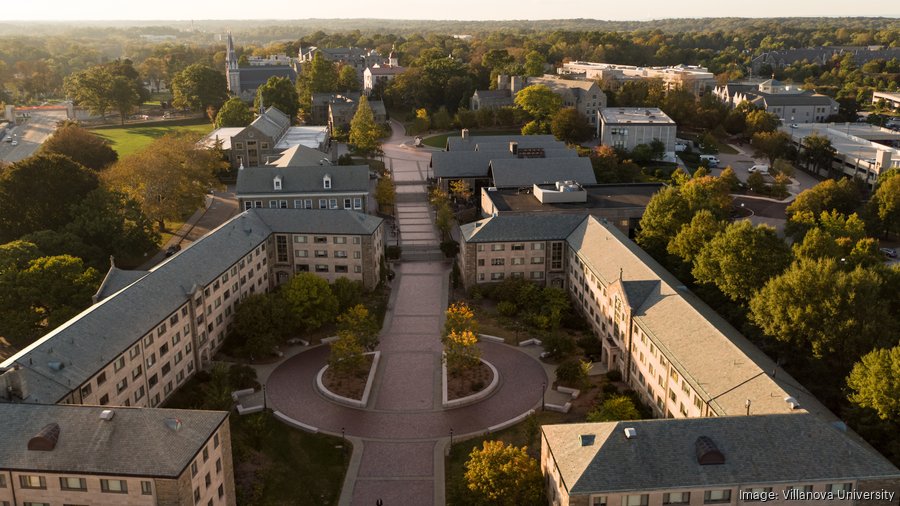Villanova is declaring victory. Not in the NCAA March Madness tournament — yet — but with its five-year capital campaign that surpassed the $750 million mark last week, well above the $600 million goal the university set when the campaign began in fall of 2013.
"For the Greater Great: The Villanova Campaign to Ignite Change" is set to wrap up formally by May 31, but Mike O’Neill, the senior vice president for university advancement, said the university raised far more than the initial goal, which it already felt was ambitious, for a number of reasons.
The rise of Villanova’s men’s basketball team, including its 2016 NCAA championship, certainly didn't hurt.
While it’s difficult to put numbers on the exact role it played, O’Neill said it’s safe to say that watching their alma mater dominate the 2016 tournament sparked pride in ‘Nova Nation alumni and motivated them to donate, but the championship also raised the profile and health of the university overall.
Applications soared in recent years, for example, with the university receiving nearly 23,000 for the class beginning this fall, up from more than 17,200 for the class starting in fall of 2016. Accepted students for this fall were notified last week, O’Neill said, so they're making their decision on whether or not to enroll just as the school settles into the national spotlight once again.
The seeds of the capital campaign were planted long before its 2016 win, of course, dating back to 2009 when Villanova President the Rev. Peter Donohue set out a strategic plan to elevate the Catholic university. Becoming a recognized doctoral research university, which happened in 2016, was part of the plan, along with a host of other ambitions that have played out along with Villanova’s success on the basketball court and expansion on its campus.
“[The campaign’s success] really follows the track the university is enjoying right now,” he said.
The strategic plan was laid out amid the Great Recession but the capital campaign kicked off as the markets recovered and grew along with the market's historic rise as donors felt more comfortable pulling out their checkbooks.
“We felt it was Villanova’s time and the markets would rebound at some point, which it did. You match that with a good economic climate and a really strong vision, that’s really a one-two punch,” O’Neill said.
University overall giving was strong in the fiscal year that ended June of 2017, said Ann Kaplan, vice president of the Council for Aid to Education and the executive director of its Voluntary Support of Education program that tracks annual giving at universities. Total giving reached $43.6 billion in that year, she said, a 6.3 percent increase, largely for capital purposes and driven by gifts in the form of stock.
One major donation to Villanova's campaign, $50 million from campaign co-chairman and alumni Jim Davis, and his wife Kim, “raised the level of philanthropy,” O’Neill said. “People have responded in kind.”
But the vast majority of the more than $750 million Villanova raised came from a pool of more than 75,000 donors. About half of them were first-time givers, something O’Neill said is a good sign for the future as it builds the pipeline of future donors. Kaplan agreed, saying cultivating donors when they’re just beginning to get involved is crucial.
“Those major donors had almost a habit of giving that was established at a much lower level,” she said. “Without that foundation, those large gifts are less likely to occur in the future.”
So where are donors dollars going? To support academic staff, students and the campus. O’Neill said more than $300 million in cash and confirmed pledges have gone into the university’s endowment which now stands at over $700 million, more than double what it was in 2008.
The market rebound helped increase endowment but philanthropy also played a role, resulting in the addition of far more endowed professorships and scholarships. All four deanships are endowed, there are now 14 endowed chairs and nearly 500 new endowed scholarships.
The campus itself is also undergoing a transformation, with the school’s donation-funded $60 million renovation of The Pavilion set to open in October, and its development of property along Lancaster Avenue, a $250 million project that includes the construction of six residential halls and new performing arts center. Construction on the dorms is underway and construction on the performing arts center kicked off in January.
“It will enable people to not drive past Villanova but drive through Villanova,” O’Neill said.
Throughout the capital campaign, he said, the school was able to keep up momentum to avoid what’s known as campaign fatigue and has already moved onto the next strategic plan for the university. It's already in the works and will take the university through 2030 and beyond.
The university will eventually launch another capital campaign to fund the new plan, and while no goal has been set yet, O’Neill was certain it would be in line with a common trend among schools now — setting their sites on $1 billion.
“You can bet your bottom dollar the next Villanova campaign goal will begin with a B as well,” he said.
Total student enrollment fall 2016
| Rank | Prior Rank | Name / Prior (*new or not ranked) / URL |
|---|---|---|
1 | 1 | Temple University |
2 | 3 | University of Pennsylvania and Health System |
3 | 2 | Drexel University |




